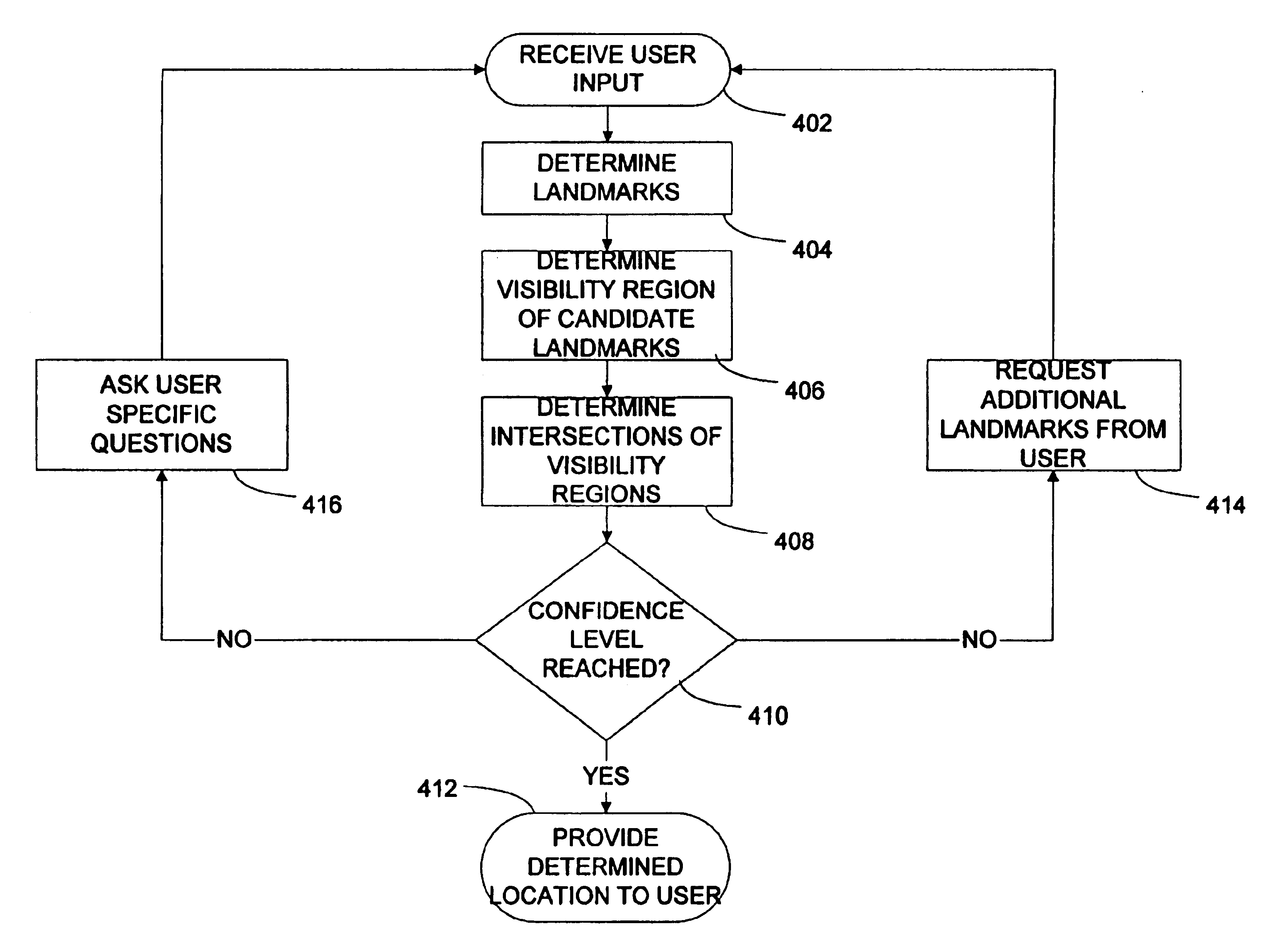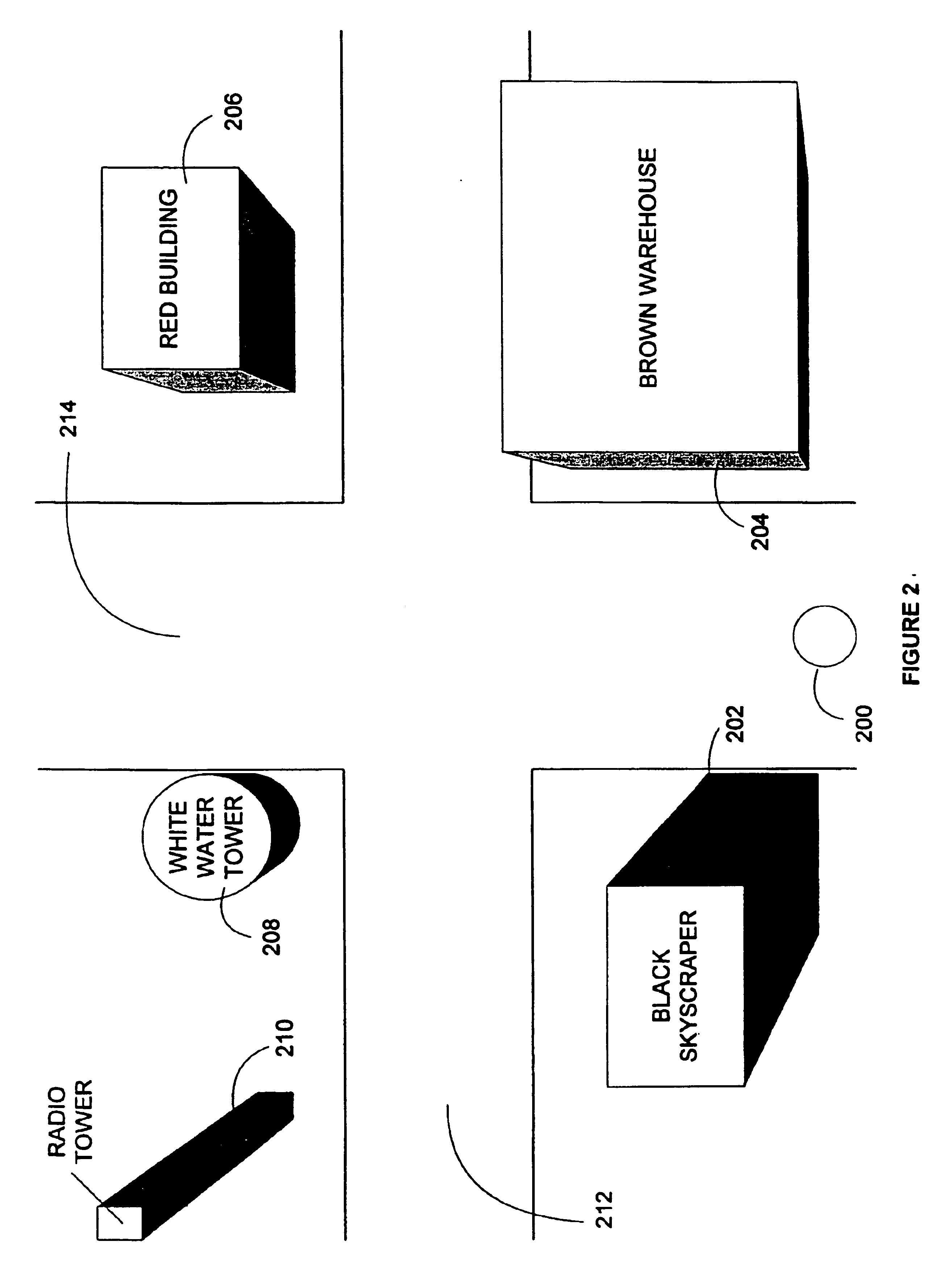Landmark-based location of users
- Summary
- Abstract
- Description
- Claims
- Application Information
AI Technical Summary
Benefits of technology
Problems solved by technology
Method used
Image
Examples
Embodiment Construction
[0021]The present invention contemplates the determination of the location of a user based on the user's description of their surroundings. A portable computing device can be used to accept user input and determine the user's location, or communicate with additional computing devices to determine the user's location. A database of landmarks, and other visual cues, can be accessed to identify the landmarks described by the user. The database can further be used to determine the user's location by identifying a unique location that matches the user provided description of the user's view.
[0022]Turning to the drawings, wherein like reference numerals refer to like elements, the invention is described hereinafter in the context of a computing environment. Although it is not required for practicing the invention, the invention is described as it is implemented by computer-executable instructions, such as program modules, that are executed by a computing device. Generally, program modules...
PUM
 Login to View More
Login to View More Abstract
Description
Claims
Application Information
 Login to View More
Login to View More - R&D
- Intellectual Property
- Life Sciences
- Materials
- Tech Scout
- Unparalleled Data Quality
- Higher Quality Content
- 60% Fewer Hallucinations
Browse by: Latest US Patents, China's latest patents, Technical Efficacy Thesaurus, Application Domain, Technology Topic, Popular Technical Reports.
© 2025 PatSnap. All rights reserved.Legal|Privacy policy|Modern Slavery Act Transparency Statement|Sitemap|About US| Contact US: help@patsnap.com



